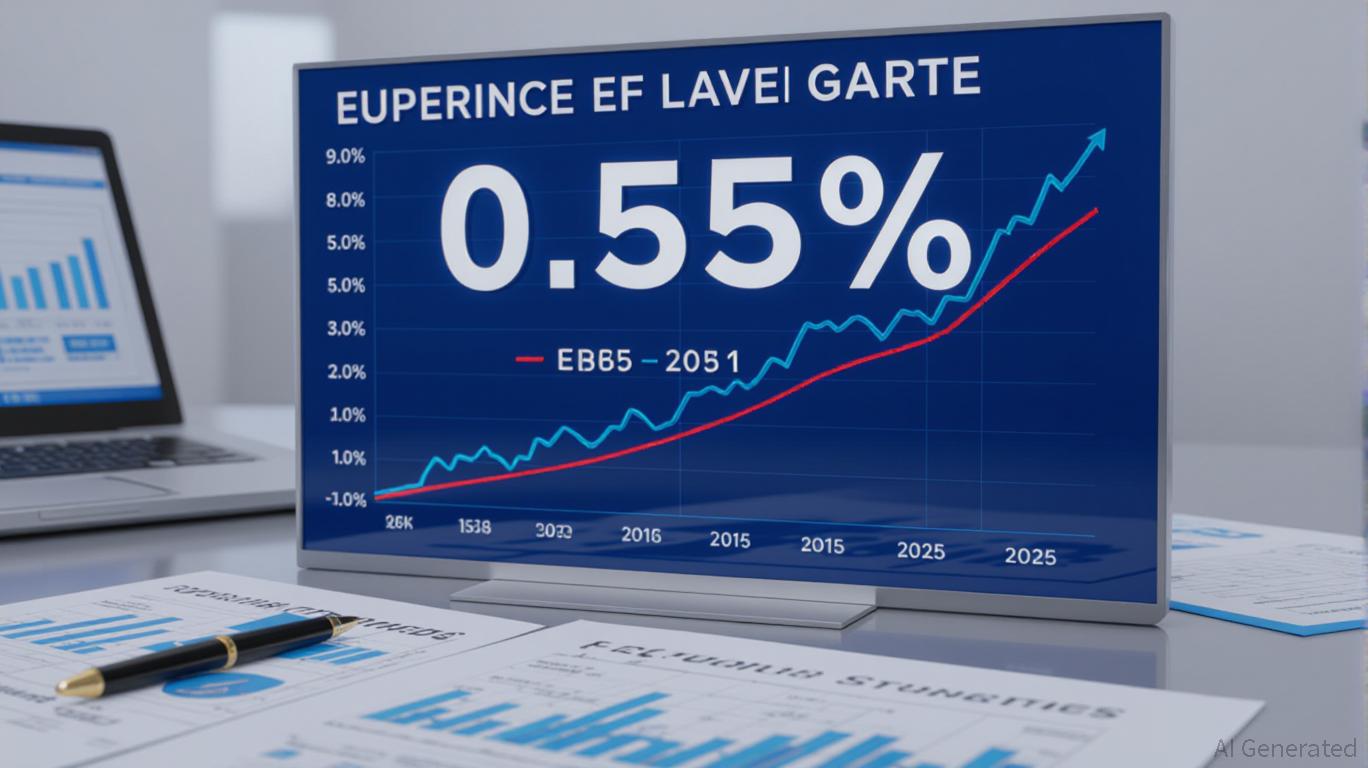
The Eurozone’s bond markets are at a crossroads, with German yield curve dynamics revealing a critical divergence between short- and long-term borrowing costs. As of August 2025, Germany’s 10-year bond yield stands at 2.52%, while the 2-year Schatz yield trades at 1.97%, creating a 0.55% spread. This steepening curve—unusual in a tightening monetary policy environment—signals shifting investor expectations about inflation, growth, and the European Central Bank’s (ECB) future trajectory. For investors, understanding this divergence is key to positioning portfolios amid ECB policy uncertainty and the Eurozone’s fiscal stimulus agenda.
The Yield Curve: A Barometer of Divergence
The German yield curve’s steepness reflects a tug-of-war between short-term policy tightening and long-term fiscal optimism. The 10-year yield, at 2.52%, remains above its 2021 record low of -0.54% but below the 2023 peak of 2.82%. Meanwhile, the 2-year yield of 1.97% has risen modestly from its 2024 level of 1.54% but remains 0.43% below its 2022 high. This 0.55% spread is the steepest in over a year, suggesting that investors are pricing in a slower pace of ECB rate hikes and a potential pivot toward accommodative policy by mid-2026.
The yield curve’s shape is influenced by two competing forces:
1. ECB Policy Normalization: The ECB’s main refinancing rate is currently at 2.15%, down from 4.25% in 2024. While the central bank has signaled a cautious approach to rate cuts, markets are pricing in a 60% probability of a 25-basis-point cut by Q1 2026.
2. Fiscal Stimulus in the Eurozone: Germany’s €1.289 trillion in outstanding long-term bonds (7–30 years) and the broader Eurozone’s €500 billion NextGenerationEU recovery fund are fueling demand for long-term debt. This fiscal expansion is pushing up long-term yields while short-term yields remain anchored by the ECB’s forward guidance.
ECB Policy Uncertainty: A Double-Edged Sword
The ECB’s balance sheet contraction—a key part of its normalization strategy—has reduced its bond holdings by €150 billion since early 2024. This has tightened liquidity in the short-term market, contributing to the 2-year yield’s rise. However, the central bank’s reluctance to commit to a rate-cutting timeline has created uncertainty. For instance, the ECB’s recent “wait-and-see” stance on inflation—pegged at 2.3% in July 2025—has left investors hedging against both a prolonged high-rate environment and a sudden pivot.
This policy ambiguity is evident in the yield curve’s behavior. A steeper curve typically signals growth optimism, but in this case, it also reflects a lack of clarity about the ECB’s exit strategy. If the central bank delays rate cuts, the 2-year yield could rise further, compressing the spread. Conversely, a premature pivot could trigger a selloff in long-term bonds, widening the spread.
Fiscal Stimulus: A Tailwind for Long-Term Yields
Germany’s fiscal strategy—prioritizing infrastructure and green energy investments—has amplified demand for long-term bonds. The 10-year Bund’s 37% share of total trading volume in 2024 underscores its role as a global benchmark. Meanwhile, the 30-year Bund yield of 3.15% (as of August 2025) reflects a risk premium for longer-term debt, with investors demanding higher returns to offset inflation and policy risks.
The Eurozone’s broader fiscal agenda, including the EU’s €800 billion recovery fund and Germany’s €50 billion climate package, is likely to keep long-term yields elevated. This creates an asymmetry: while short-term yields are constrained by ECB policy, long-term yields are being pushed higher by fiscal expansion.
Investment Implications: Positioning for Divergence
For investors, the key is to hedge against both a steeper curve and a potential inversion. Here are three strategies:
Leverage the Steepening Curve: Investors can capitalize on the 0.55% spread by purchasing long-term Bunds (e.g., 10–30 years) while shorting short-term Schatz bonds. This strategy benefits if the ECB delays rate cuts, allowing long-term yields to rise further. Hedge Against Policy Shocks: Given the ECB’s uncertainty, investors should allocate a portion of their bond portfolios to inflation-linked securities (e.g., Germany’s inflation-indexed bonds) to protect against unexpected rate hikes. Sector Rotation: Sectors aligned with fiscal stimulus—such as renewable energy, infrastructure, and construction—are likely to outperform. For example, German renewable energy firms (e.g., Siemens Energy, RWE) could see increased demand as the government accelerates its climate agenda. Conclusion: A Tipping Point for Eurozone Bonds
The divergence between German short- and long-term yields is a microcosm of the Eurozone’s broader economic and policy challenges. While the ECB’s normalization efforts are tightening short-term liquidity, fiscal stimulus is propping up long-term demand. This creates a unique opportunity for investors to exploit yield curve dynamics while hedging against policy risks.
As the ECB navigates its path forward, the key question remains: Will fiscal expansion outpace monetary tightening, or will policy normalization dominate? For now, the yield curve suggests the former—but history reminds us that central banks have a way of surprising markets. Positioning for both scenarios is not just prudent—it’s essential.
